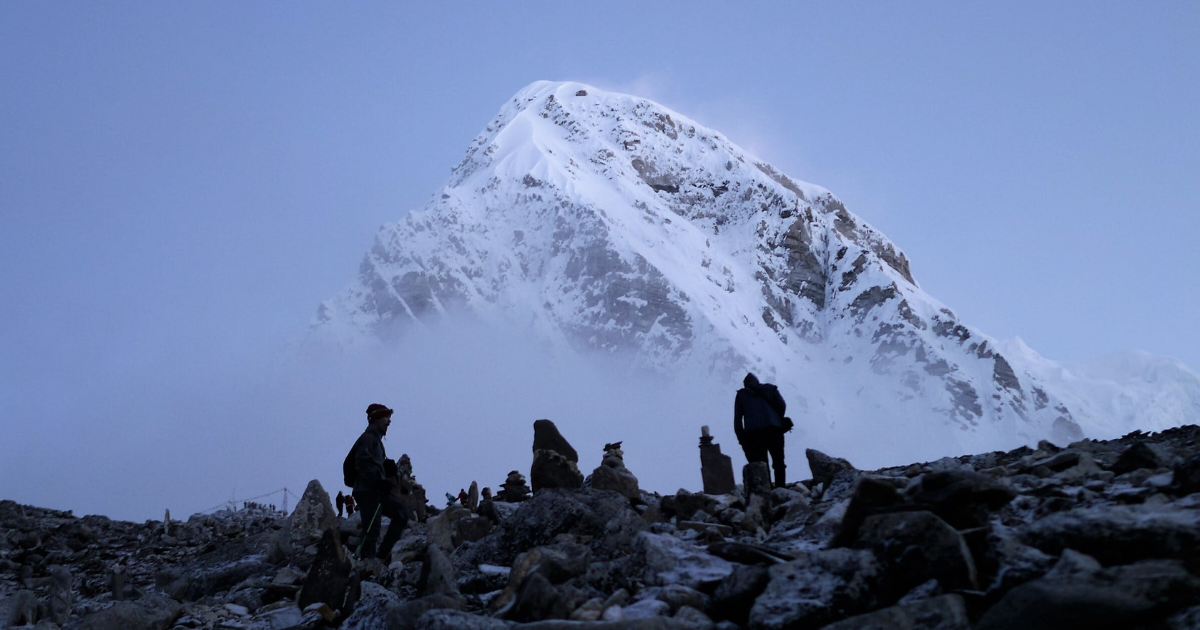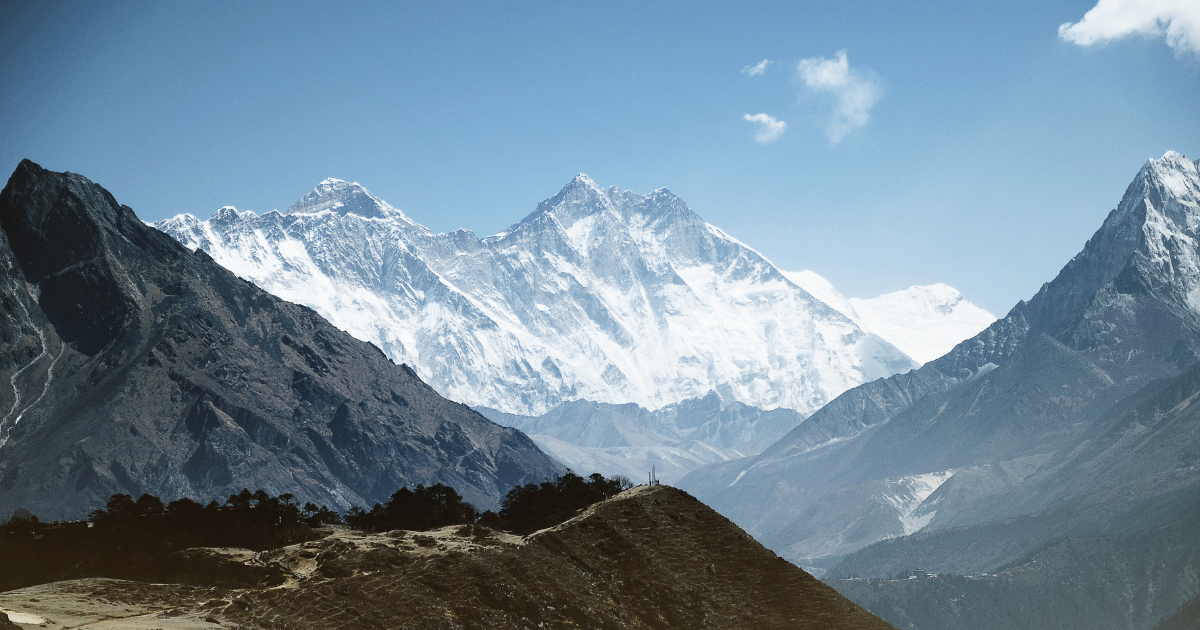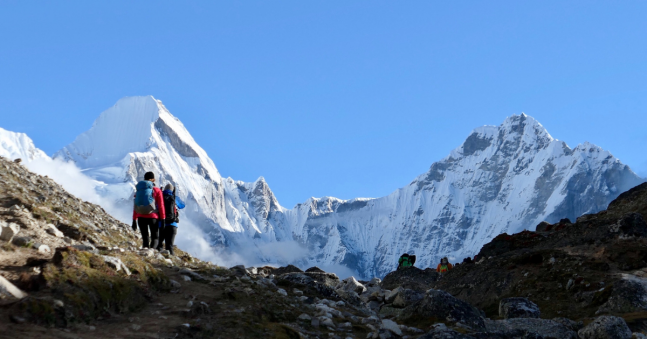How High is Mount Everest?
Mount Everest is the world’s highest mountain, the ultimate peak and a magnet for adventurers from all over the world. Located in the beautiful Himalayas. Everest has two main routes to the summit; one from the southeast in Nepal and one from the north in Tibet. Summiting the world’s highest mountain is a lifelong goal for many mountaineers. But how high is Mount Everest?
The first official height of Everest was established by Nepal in 1955, measuring an impressive 8,848m (29,029 ft) high. However, in 2005, the Chinese measured the rock height of Mount Everest and found it to be 8,844.43m tall. This led to a disagreement between Nepal and China as to what the actual height of Everest is - should it be measured as rock height or snow height? They eventually came to an agreement in 2010, that Everest’s official height is 8,848m, with a rock height of 8,844m.
How High Is Everest Base Camp?
For many people wanting to experience this famous mountain, without climbing the dangerous route to the summit, have the option of adventuring to Everest Base Camp instead. A fantastic challenge in itself, with spectacular views of the Himalayas, including views of the awe-inspiring Mount Everest. If climbing to Everest Base Camp is on your bucket list, then check out our challenge here.
Everest has two base camps; the South Base Camp, located in Nepal, at an altitude of 5,364m and the North Base Camp, located in Tibet, at an altitude of 5,5150m. The trek to the base camp on the South Side of the mountain, is by far the most popular, and the destination of our Everest Base Camp Trek. For more information on the location of Everest Base Camp head over to our Adventure Journal Post; Where is Everest Base Camp?

The History of Everest
Everest, also known as Sagarmatha (Nepalese) or Chomolungma (Tibetan), is the international border between Nepal and China. Many summit attempts of Mount Everest were made before Sir Edmund Hillary finally became the first person to reach the 8,848m summit on May 29th in 1953.
- 1865 – Everest was given its official English name by the Royal Geographical Society in 1865. The name Everest was recommended by Andrew Waugh, the British Surveyor General of India, and was named after Andrew’s predecessor, Sir George Everest.
- 1921 – The first British expedition to Mount Everest took place in 1921, organised and financed by the Mount Everest Committee. Mallory, Bullock and Wheeler spent 5 months exploring the base of the mountain and then reached the North Col (7,020m) before having to retreat, due to strong winds.
- 1922 – The first ever summit attempt was made, during Britain’s second expedition to Everest. The team reached 8,170m on May 22, on the North Ridge – being the first humans to ever climb above 8,000m. A day later, two members of the expedition reached 8,320m, using oxygen for the first time.
- 1924 – The third British expedition took place in 1924. On June 8 Mallory and Irvine set off on their summit attempt, but were last seen on the second step, nearing the base of the final section of the ascent. It is unknown as to whether they ever made it to the summit of Mount Everest.
- 1933 to 1950 – A number of attempts to reach the summit of Everest were made, none of which were successful.
- 1950 – Nepal opened its borders to foreigners. In 1950 Bill Tilman and his team conducted an exploratory expedition to Everest through Nepal – along the route which is now used to summit Mount Everest.
- 1952 – The Soviet Union launched a summit attempt from the Tibetan side of the mountain, with an aim of reaching the summit before the British expedition taking place the following year. This attempt was unsuccessful, with both Russian and Chinese authorities denying that a summit attempt even happened.
- 1953 – John Hunt, returned to Nepal in 1953 to lead a ninth British expedition. Two teams of two attempted the summit. The first team, Charles Evans and Tom Bourdillon achieved the first ever ascent of the 8,750m South Summit, but then had to return due to problems with oxygen equipment – only 100m from the summit. The second team, including New Zealander Edmund Hillary and Nepali, Tenzing Norgay, eventually reached the summit of Everest at 11:30am on May 29.
- 1956 – A Swiss expedition then put the next four climbers on the roof of Everest.
- 1960 – A Chinese team of three mountaineers, claimed to reach the summit of Everest via the North Ridge. However, due to the lack of photographic evidence, these claims have not been accepted amongst mountaineering circles.
- 1963 – The first ascent by an America – Jim Whittaker, was completed in 1963. Jim was accompanied by the Sherpa, Nawang Gombu, who later became the first person to summit Everest twice, in 1965.
- 1975 – Junko Tabei, from Japan, became the first woman to summit the mountain on May 16. She then went on to be the first woman to complete the Seven Summits in 1992.
- 1978 – The first successful summit of Mount Everest was made, without the use of any supplemental oxygen, by Reinhold Messner of Italy and Peter Habeler of Austria.
- 1980 – The first successful winter summit of Everest, by a team of Polish climbers, occurred on 17 February 1980.
- 1995 – Alison Hargreaves, of Britain, became the first woman to climb Everest without support from a Sherpa team and without oxygen tanks.
If you’d like to experience a taste of Everest, then join us on our Everest Base Camp challenge – a 12 day trek through the stunning Himalayas, trekking to Everest Base Camp at 5,357m. Once reaching base camp, we’ll then continue on to summit Kala Patthar (5,545m) for the best views of Mount Everest.
This really is a once in a lifetime adventure, supported by highly experienced local guides and UK mountain leaders. If you’d like to explore the world’s highest mountain range, then Request a Brochure today – and start your journey to Everest Base Camp!








